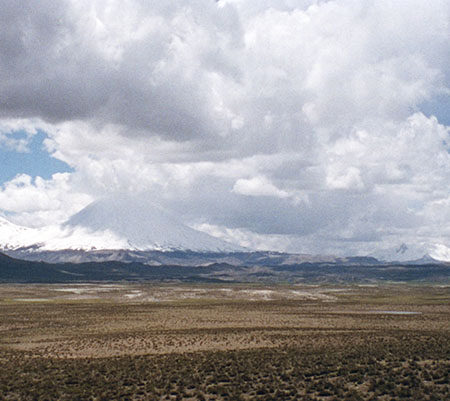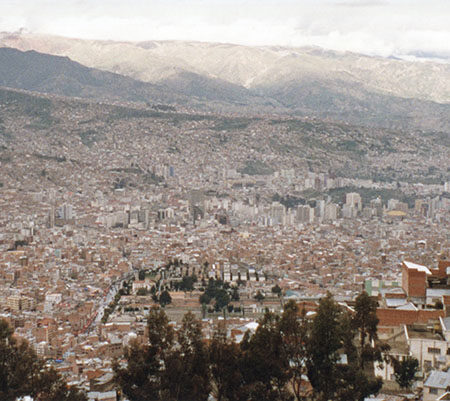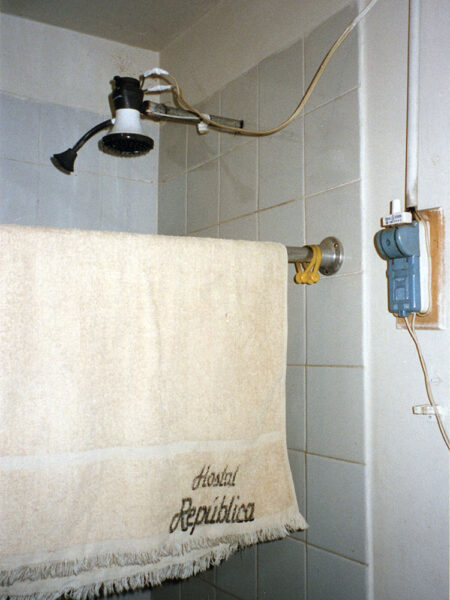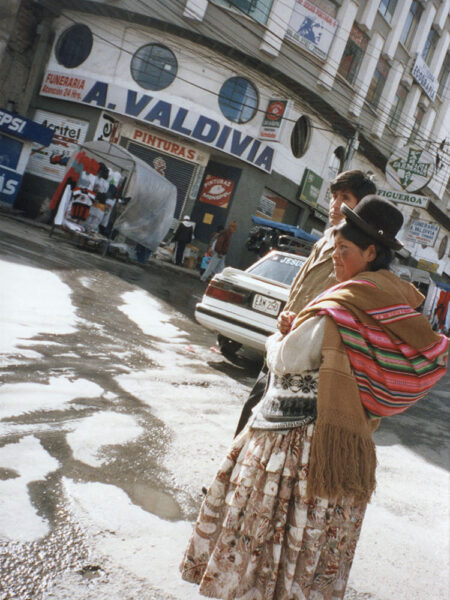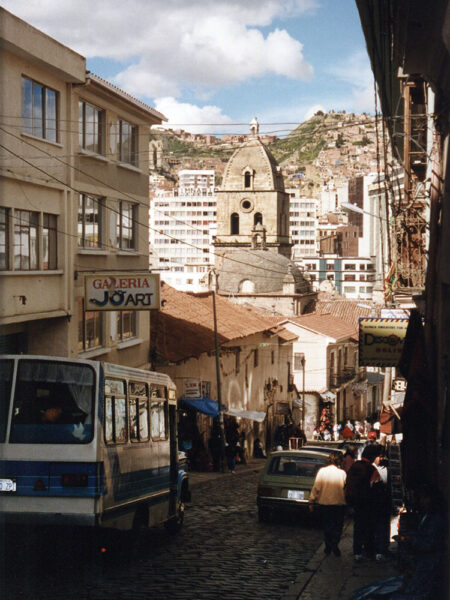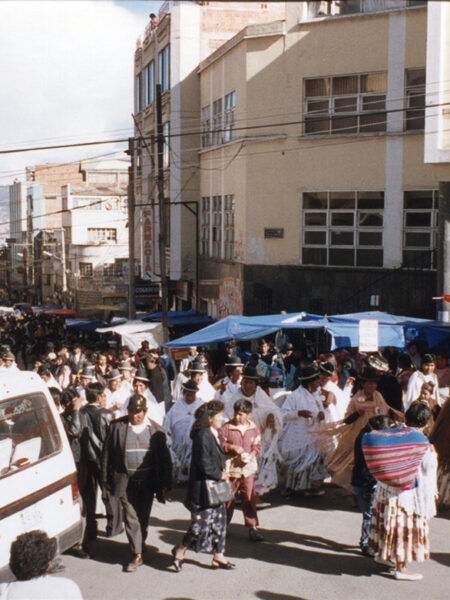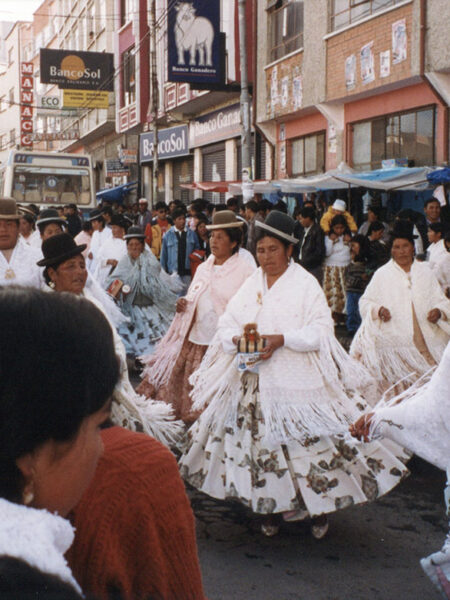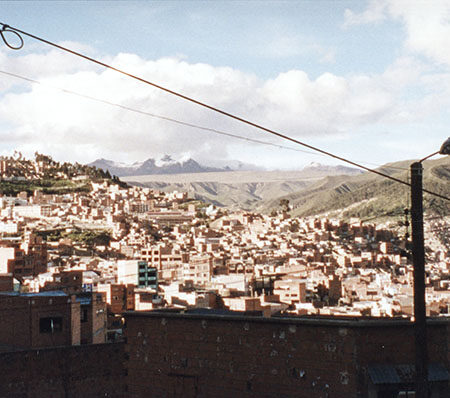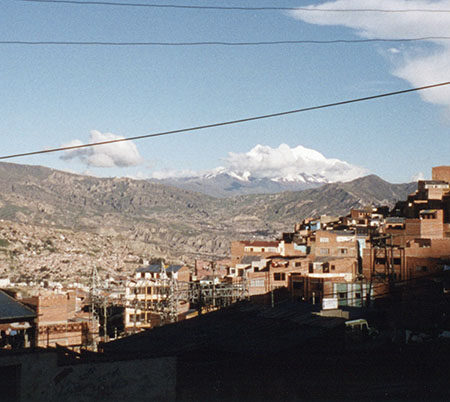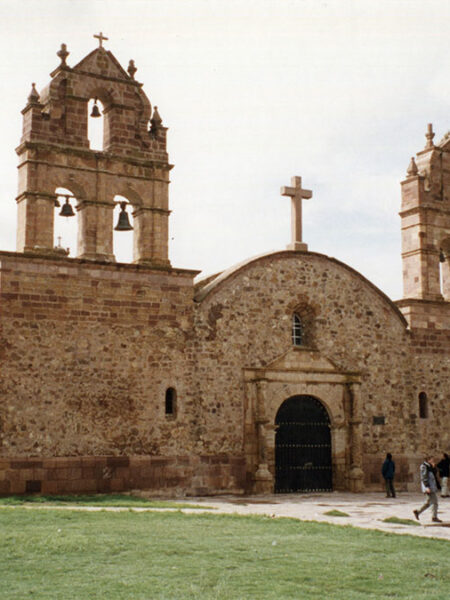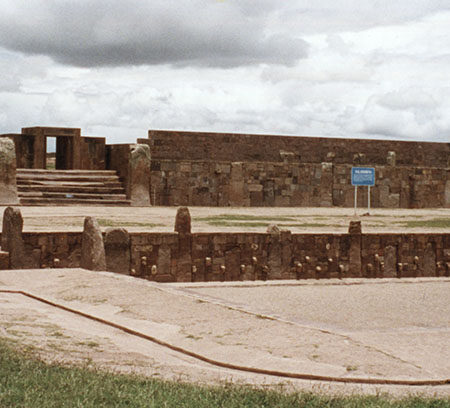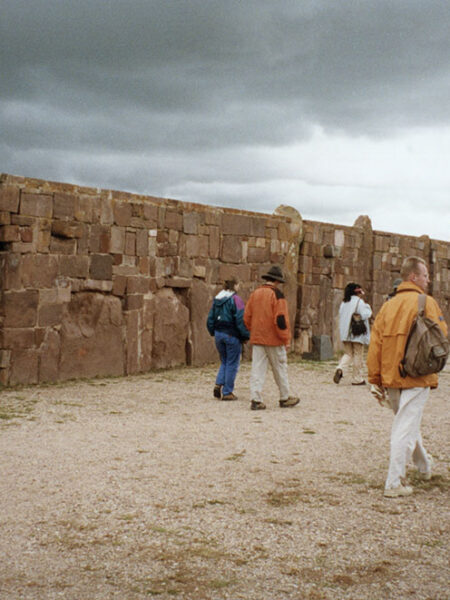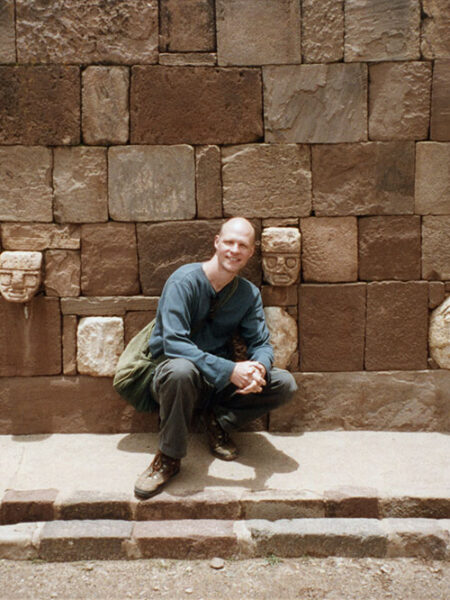By bus, I travelled from sea level on the coast at Arica in Chile to almost 4kms up at La Paz, through some of the most spectacular scenery I have ever seen in my life. Interminable waits at Chilean and Bolivian checkpoints. No altitude sickness problems it seems, but I’d been at 4500m at El Tatio with no hassle. Up on the Bolivian altiplano stretched beautiful, lush green plains dotted with alpaca and their newborns, bending their long necks to graze. The occasional flash of colour from a Bolivian campesino woman’s clothes; the scattered structures of adobe villages; spectacular snow covered mountain peaks. Nearing La Paz, heavy grey stormclouds contrasted with patches of deep blue sky.
Coming into La Paz was a sight I’ll never forget. The city is huge and sprawling, and coats the inside of an enormous deep valley like textured paint. The strange sight of skyscrapers at the bottom. Modern and colonial buildings at the deepest level swim up to ramshackle adobe huts spilling over the valley edges. The backdrop was the spectacular 6402m triple peak of Illimani, lit pink and purple with the setting sun. I’ve never seen anything like it.
I got a taxi to a cosy room in the Hostal Republica, a lovely old colonial building in the centre of town for US$10 a night. The streets of La Paz are steep, often cobblestoned and narrow, all leading down to the busy main streets and the lowest part of town. Slow walking is essential, as before long you are panting for breath and feeling like you’ve just run several blocks.
The next day I walked miles and miles through the city, through a market where I stood at a stall munching on a saltena for brunch (like pasties with hot, drippy chicken or vege fillings), and a long and steep climb almost to the top of the valley edge, where the roads became mud tracks and shacks clung to the slopes. Narrow, steep markets; a wide street where a marching band and dancing local women paraded past (how can it be possible to walk these streets, at this altitude, carrying and blowing a tuba?); through the fascinating La Paz cemetery (with niches arranged on levels like mini apartment blocks); and higher up to where I had a magnificent view of the city and the mountains behind it. So many sights, sounds and smells, the kind of full sensory experience that reminds me of India.
Carnaval seems to be starting soon; I walked a few gauntlets of kids throwing buckets and balloons of water. At one spot I dared some kids throwing water from a balcony, and instead got my pants leg soaked by a well-aimed water balloon thrown from the street!
At a restaurant I introduced myself to an Australian couple from Melbourne, who were really nice people and good company over dinner.
The next day I took a tour outside the city to the pre-Inca ruins of Tiwanaku. The bus navigated the busy streets of La Paz, full of campesino women in their voluminous petticoats and bowler hats, sitting in the gutter or in little wooden constructions with their wares; a mass of humanity busily engaged in survival and making a buck.
Our guide said everything in both English and Spanish in a dispassionate monologue that didn’t exactly bring history alive. After a stop at Laja (for a very brief period the original site of La Paz) and a look at their interesting Baroque-Mestizo-Byzantine church, and a stop to take in the spectacular view over the altiplano and Lake Titicaca in the distance, we arrived at the ruins. A bit less impressive than I expected, but the stone walls of the Kalasasaya ritual platform were beautiful, of precisely fitted blocks. Also the sunken Templete Semisubterráneo was in amazing condition, its walls dotted with carved heads. There were also some impressive figural monoliths, and a beautifully carved Gateway of the Sun. This was a culture, I was interested to learn, that had in various phases lasted a couple of thousand years, whereas the subsequent Inca culture was around only a hundred or so.
The next day, back at La Paz, I explored a few dusty museums full of a mishmash of displays, in the lovely little restored colonial street Calle Jaen. The Pre-Columbian Museum’s basement featured some beautiful gold pieces rescued from the rapacious Spaniards. The highlight was the Museum of Bolivian Musical Instruments, chock full of instruments made from every material imaginable, from tin cans to armadillos.
The rest of the day I felt a bit aimless and wandered, following up some travel ideas at an agent, and eventually seeing an American blockbuster at a cinema. Occasionally you get a hankering for an escape! Coming out of the cinema into the busy and noisy streets was a shock, and I was feeling indecisive about where to go next. I needed to make a decision, and luckily something came my way that evening to help me make it. I was in a restaurant, and began talking to two girls, Swiss and American. L, the Swiss girl, wanted to do a seven day trek called the Illampu Circuit, near Sorata in the Yunga Valleys, and needed someone to go with her. Sounds fun! That’s the great thing about travelling alone, you can be completely spontaneous …


